Multiresolution compression
and feature
line reconstruction for Reverse
Engineering
Giuseppe Patané, Corrado Pizzi, Michela Spagnuolo
{patane, corrado, spagnuolo}@ima.ge.cnr.it
Istituto per la Matematica Applicata
Consiglio Nazionale delle Ricerche,
Via De Marini 6,
Genova 16149, Italy
1 Abstract
In this paper we analyze applications of Douglas-Peucker algorithm to compression
and feature line extraction of 3D models from digital scans introducing
a multiresolution model that enables a fast description of the object at
different levels of details through the use of a unique rearrangement,
stored in a file, of the input data set. The multiresolution algorithm,
which reaches high data compression rates while producing fair approximation,
is used to simplify each point of the input data set according to its scale,
its basic shape type and its geometric parameters. Finally, object feature
lines are reconstructed using shape information previously found. The proposed
algorithm is able to segment the object into meaningful patches, which
represent form features of the object, resulting in an important tool for
reverse engineering and rapid prototyping.
KEYWORDS: Compression, Multiresolution Analysis, Feature Lines,
Reverse Engineering, Rapid Prototyping, Douglas-Peucker algorithm.
2 Introduction
While in the traditional approach, objects are manufactured starting from
a CAD model in reverse engineering real parts or object prototypes are
transformed into CAD-like models that can be modified with different mathematical
transformations providing a great flexibility to the design phase. The
process of CAD model starts from a set of points, which are acquired on
an existing object with several methods such as tactile or non-contact
ones. The resulting data set, unorganized (laser scanners) or partially
ordered (digitizing machines), is transformed into polyhedral or smooth
surface converting therefore its discrete description into a piecewise,
continuous model.
A basic step towards the creation of a CAD-like model, is the so-called
segmentation. Its aim is the logical subdivision of the input, generically
a set of points, in subsets such that each of them contains points belonging
only to a specific surface type [2].
The approaches used for the segmentation process are general or dedicated
[3].
The first ones use only general knowledge of surfaces to execute the segmentation,
while the dedicated approaches, that are preferable, search for particular
structures in the data set [3].
Furthermore, the connectivities and continuity in the data structure of
the model is very important and a low-level description, such as a simple
collection of faces in not enough [2]
and a decomposition into functional patches would be desirable in the majority
of CAD/CAM applications.
In this sense, the work presented in this paper is concerned with the
definition of high-level polyhedral models of the object skin, which is
eventually described as a set of feature lines [4].
Starting from this model, we are seeking to segment the surface into machining
meaningful patches representing form features of the object.
Out approach to set up a high level description of a data set is described
in the following steps:
-
level of detail simplification: compression through a multiresolution analysis.
This phase aims at reducing sampled points to a minimal number discarding
the ones which do not locate important shape elements. Therefore the main
goal of simplification is to generate a low approximation that maintains
the main features and overall appearance. The number of sampled points
necessary to represent a data set accurately depends on the model and on
its characteristics with respect to its morphological structure,
-
scan line analysis: shape feature classification using a scale-base and
geometric characterization of features that allows to distinguish local
and global details,
-
feature lines detection: extraction of feature lines or curves achieved
joining points which lie on adjacent scansion lines judged similar according
to the measures defined in § 5.
The paper is organized as follows. First data compression and simplification
technique are presented. Then the measures used to classify the shape feature
of the scansion lines are introduced and, finally, the determination of
the feature lines and considerations about the segmentation process are
given.
3 Data compression
New scansion technologies have accelerated, on the one hand, the manufacturing
process providing dense data set in order to achieve accurate reconstructed
products and have brought, on the other hand, the need of discarding redundant
information. The aims of data compression [2,3,5,10,16]
is to preserve the shape and to control locally the approximation error.
Its main advantages are a large decrease of storage requirements, a lower
cost for visualization and a fast transmission, which is important for
web-based applications where bandwidth limitation becomes a major concern.
Furthermore, this step also represents a preprocessing with respect to
classification of shape features.
In the choice of data compression algorithms for reverse engineering,
the constraint is the no-repositioning of sampled points, that is, the
compressed data set has to be a subset of the original one.
First of all, the sampled object is assumed to be a 2.5D surface with
points distributed on parallel planes that define a sequence of scansion
lines.
Definition. Let be F: = { (x,y,z) ‘R3:f(x,y)
= z } a single-valued function defining the object surface, and S: = {
(x,y,z) ‘ R3: ax+by+c = 0
} a plane. A scansion line L is an ordered sequence of (n+1) points L:
= { P0(x0,y0,f(x0,y0)),...,
Pn(xn,yn,f(xn,yn))
} such that L is common to F and S and at least one between (x0,...,xn)
and (y0, ..., yn) is a closely increasing or closely
decreasing sequence. Then, the sampling of F with respect to the scansion
direction defined by the normal vector (a,b,1) to a set of planes Si
= {(x,y,z) ‘ R3:ax+by+ci
= 0} i = 0, º,k is represented by L0,
...,Lk where each Li is the scansion line on F with
respect to Si with ci > ci+1.
Given a 3D-set P = {Pi}i = 0n, associated
with the polygonal curve S(P0,º,
Pn) obtained connecting consecutive points Pi,Pi+1,
i = 0, º, n-1 with a line segment, we want
to define a new set Q = {Qi}i = 0m such
that
-
Q is a subset of P (m £ n),
-
the error between the data points and the fitted line is less than a maximum
tolerance with respect to the Hausdorff distance d defined by the following
relation
| d(X,Y): = |
max |
{dX(Y), dY(X)} |
|
where dX(Y) represents the distance of Y from X defined as
| dX(Y): = |
sup
y ‘ Y |
{ |
inf
x ‘ X |
{||x-y||2}} |
|
"X, Y Õ R3
with || ||2
Euclidean norm.
Suppose we are given a chain with n segments, the Douglas-Peucker hierarchical
algorithm [3,16]
sorts points {Pi}i = 0n in decreasing
order of importance with respect to the criterion that will be defined
using the distance d. Therefore we have to settle the permutation j: {0,
..., n} ---> {0, ..., n} that represents the rearrangement of the input
data set.
The first step selects endpoints of the line segment S(P0,º,
Pn) choosing j(0) = 0 and j(1) = n. Constructed S(Pj(0),
Pj(n)), which combines P0 to Pn, the algorithm
picks out the point P* that satisfies the relation
| d(P*, S(P0, Pn))
= |
max
i = 1, º,n-1 |
{d(Pi,S(P0,Pn)}. |
|
If P* = Pk we update j choosing j(2) = k and we split
the chain at this vertex obtaining two new polylines (P0Pk)
and (PkPn). In every subset of the input line the
splitting point, which is the farthest vertex from the line segment that
joins local endpoints (i.e local anchor and floater), is recursively selected
and the index of the point with maximum distance gives the value of j for
the step in issue. After at most (n-1) steps, points will be hierarchically
reordered.
The method provides a sequence (Pj(i), diH)i
= 0n that is used for the description of the object at
different levels of details: for instance, to find the polygonal chain
that satisfies the relation
| d(S(P0, º,
Pn), S(Q0, º, Qm))
£e |
|
(1) |
the choice is to set {Qi = Pj(i)}i = 0m
with m such that
| diH „e
i = 0,
º, m,
and dm+1H <
e |
|
where the reduction percentage (100*[(n-m+1)/( n+1)]) % depends on the
setup tolerance.
The common use of this simplification method has a different approach
to reduce the number of points of a dense sampled data set with the use
of a tolerance band e. At a given step we approximate
the chain from Pi to Pj with
-
the line segment (PiPj) if the farthest vertex P*
from this segment has distance at most e, otherwise
-
we will split the chain at this vertex applying the criterion recursively
to the new polylines (PiP*) and (P*Pj).
We observe that the output of the algorithm is equal to the previous subset
of P but it has been preferred to stop the calculation after (m+1) steps
constructing the set of indexes {j(0), ..., j(m)}. Therefore the upper
bound of the evaluation of the distance formula, which is the most time
consuming part of the procedure, is O(mn) rather than (nlog2n)
required for a total rearrangement of the data set [6].
We can modify the previous situation such that will be demanded in input
to set up a data reduction rate rather than a tolerance band. This choice
is justified by a greater simplicity that it finds commonly in estimating
this parameter regarding the choice of the maximum approximation error
e.
Set up a value k we consider the set {Qi = Pj(i)}i
= 0m with m: = [[(100-k)/ 100] ×(n+1)] where [ ]
is the integral part. This choice allows to obtain the polyline S(Q0,
...,Qm) which fulfills (1) with
e
= mini = 1, ...,m{dHi} and the result
is
achieved writing in an ASCII file, for every polyline, the rearrangement
represented by the permutation j and its array of distances (dHi)i
= 0n (dH0 = dHn
= 0). To summarize, our approach to compression allows to reduce the time
needed to switch from a level of detail to another, without additional
cost: indeed only the simple reading of the indexes j(i), which characterize
the points of the output, is required without any distance computation.
4 Multiresolution analysis and simplification
In this section, we want to define the multiresolution approach to the
description of a sampled data set through the Douglas-Peucker. Consider
a set of points in R3, expressed as a column vector of
sampled points Sn: = [P0, P1, ...,Pn]T.
We wish to construct a low resolution version Sn-1 of Sn
with a fewer number of points m. The standard approach [2]
to its construction is represented by a (m, n+1) matrix such that the relation
Sn-1 = An*Sn holds. In the filtering process
from Sn to Sn-1 (n-m+1) points will be omitted with
an amount of detail lost that will be estimated regarding the Hausdorff
distance d. We indicate therefore with Dn-1 the lost detail
of Sn through the relation Dn-1 = Bn*Sn
with Bn (n-m+1, n+1) matrix and we refer to An and
Bn with the term of analysis filters while the splitting of
Sn in (Sn-1, Dn-1) is called decomposition.
Applying recursively this method we are able to express the initial set
of points through a hierarchical structure of low resolution descriptions
S0,..., Sn-1 and of details D0, º,
Dn-1. This process, called filter bank, is summarized in (2).
Since Sn, as we will see in the following pages, can be
reconstructed from the sequence S0, D0, ..., Dn-1
the filter bank represents a hierarchical transformation of the sampled
data set.
Introduced the outline base for the multiresolution analysis we have
to specify:
-
the criterion of construction of Ak and Bk "k
= 1, ..., n-1,
-
the error achieved in the compression process from Sn to a lower
resolution Sk,
-
the expression of Sn through S0, D0,...,
Dn-1.
To this end we consider a decreasing sequence of real non-negative tolerance
bands that belong to the a-set {d1,
º,dn:
d1 > ... > dn, n „ 1 }
and we define with
-
Sk the data set achieved applying to Sk+1 the Douglas-Peucker
algorithm with tolerance band dk+1 "k
= 0, º, n-1,
-
Dk: = Sk+1-Sk "k
= 0, º, n-1 the data set of detail,
Each element of the a-set represents
the width of a tolerance band and the simplification error dn.
From previous relations we have that Sk Õ
Sk+1 and we can construct the sequence and its filter bank with
| Sk = {Pj(i) ‘
Sk+1: dHi „>=
dk+1} = {Pj(i) ‘ Sn:dHi„>=dk+1
} |
|
and
| Dk = {Pj(i) ‘
Sn: dHi ‘ [dk+2,
dk+1) }. |
|
We conclude that Sk-1 is achieved applying the algorithm with
band dk+1 either to Sn or to Sk.
Therefore the original data set is uniquely decomposed using the low
resolution description S0 and the detail sets (Dk)k
= 0n-1. Finally, the evaluation of the error carried out
in the compression process from Si to Sk (i > k)
is
The accuracy of the process has to be tuned on the width of the value
dn and all lines have to be simplified using a unique
a-set
of tolerance bands. Problems may arise in the choice of this set due to
unbalanced density and dimension of feature shape (a possible way to solve
this problem is re-calibration of the a-set).
In shape line analysis tolerance bands are defined using the following
relation
| di: = i × |
d1
n |
i = 1, ...,
n |
|
with d1 maximum global error (i.e maximum error of every polyline).
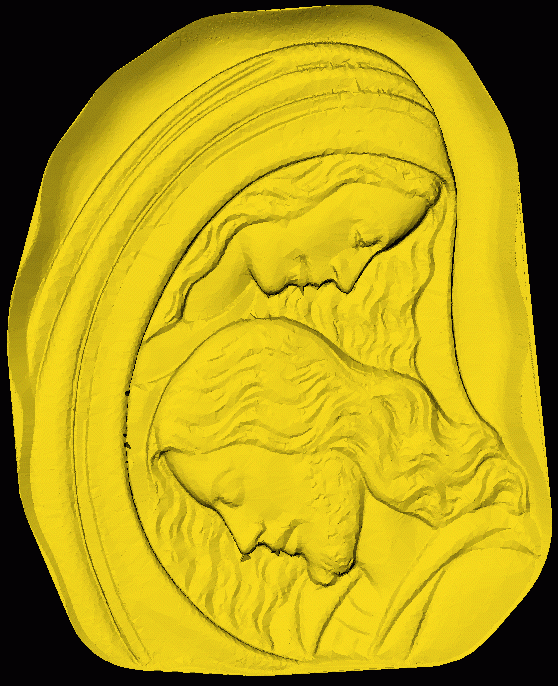
Figure 1: Original data set with 1.328.531 points structured in 1.214
polylines
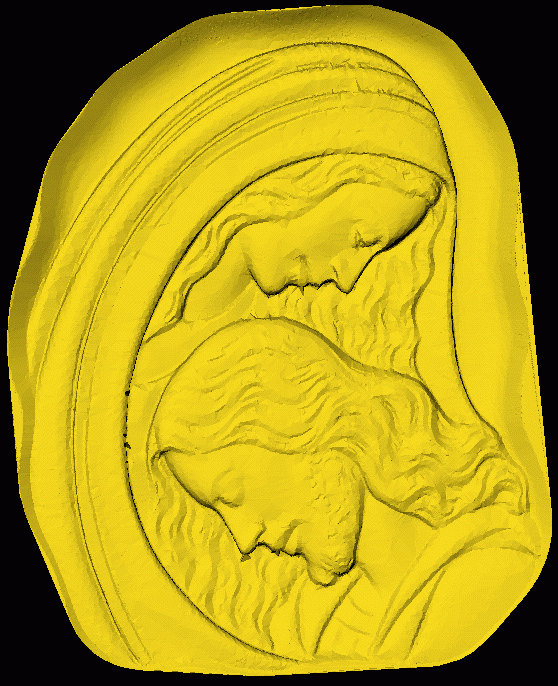
Figure 2: Result of compression: compressed data set with 66.427 points,
date reduction 95% .
5 Scansion line analysis and feature line
detection
The aim of scansion line analysis, which relies on the assumption that
the shape of next scansion are similar for densely defined data set, is
a classification of shape features and it represents the background for
shape reconstruction. Therefore feature lines of the object will be locally
compound of similar points with respect to shape similarity defined in
the following.
As described in the previous section the Douglas-Peucker method, with
a user defined a-set, enables to obtain a first
description of points of a scansion line with respect to size of shape
features. Beside this scale analysis, which codes sizes of features, we
consider geometric parameters with the aim to classify their type. The
adopted scheme (see tab.1), which uses three points to describe a feature,
identifies shapes meaningful for producing a decomposition relevant with
respect to traditional basic approach in CAD contexts.
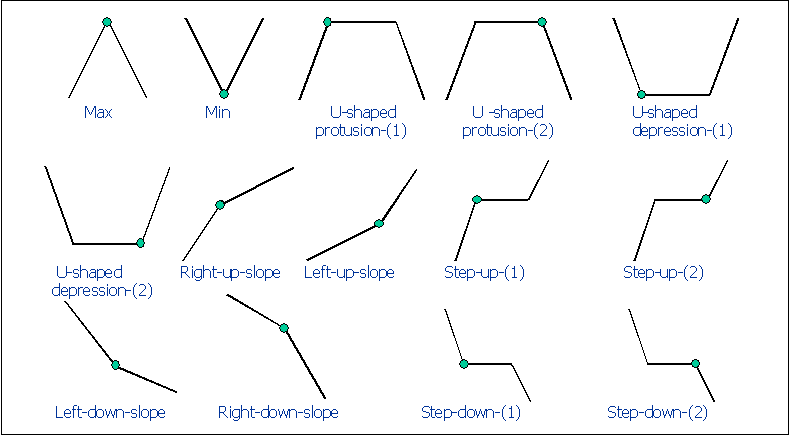
Figure 3: Tab. 1 Mathematical description of the primitive shape elements.
For each configuration, squares represent points where the label will be
added
The second classification (see tab.2), based on angular measures
d,
b
that are introduced regarding the same triplet of points according to the
previous classification, distinguishes among shape features evaluating
their amplitude and orientation.
Using the a-set, the previous classification
and the angular measures we are able to introduce three basic similarity
"relations" on the input data set:
-
a-width similarity: P ‘
LP, Q ‘ LQ
| P ~ a Q <--->
width(P) = width(Q) |
|
where width(K) is the
a-width that characterizes
the point K in its scansion line,
-
feature similarity: P ‘ LP, Q ‘
LQ
| P ~ T Q¤
<---> T(P) = T(Q) |
|
where T(K) represents the class of point K according to table 1,
-
geometry similarity: P ‘ LP, Q ‘
LQ
| P ~ GQ <--->
their orientation and inner angles are similar |
|
(i.e they differ less than a given threshold).
Beside shape characterization, the suggested measures are used, on the
one hand, for evaluating similarity among shape features and, on the other
hand, for reconstruction of the last ones. This method recognizes feature
lines in directions almost orthogonal to the scansion one by linking similar
points from a line to a next one. Using the previous relations, two points
P, Q ‘ R3 will be connected
if and only if
| P ~ a Q,
P ~ TQ,
P ~ G Q. |
|
Moreover, distance among points is considered with the purpose of maintaining
fidelity of line recognition that decreases increasing the first one. Following
the approach in [15]
an influence cone, with a variable axis oriented in the direction of the
lines to reconstruct, is used to select portion of adjacent line relevant
for reconstruction. We underline that a crucial part of the algorithm for
detection of feature lines is the selection of the part of similar points,
because there may be a considerable number of candidate points as well
as none. Furthermore, scanning direction is fundamental because feature
lines whose directions are almost parallel to it will be, generally, impossible
to detect with this approach.
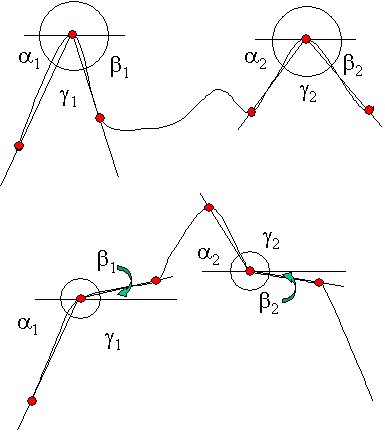
Figure 4: Tab. 2 Classification of feature based on angular measures.
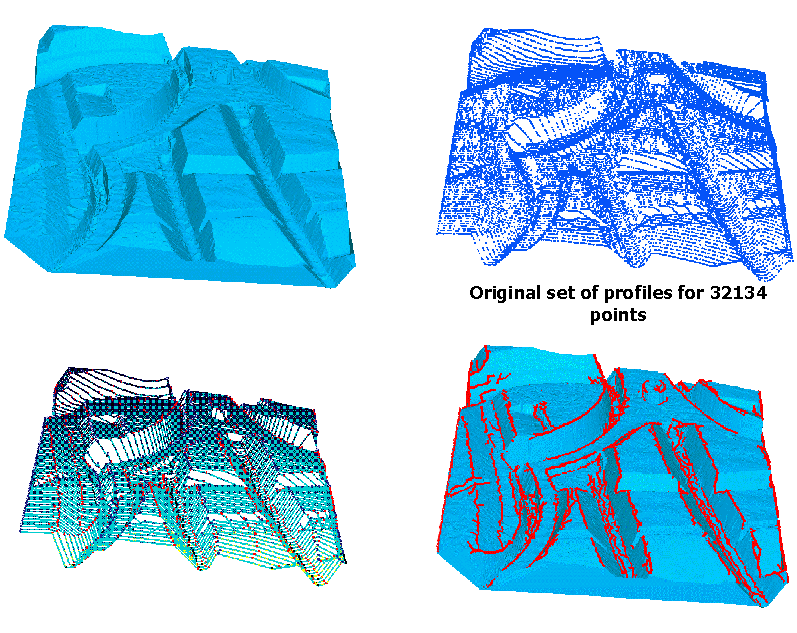
Figure 5: Application of the method to a 2.5D example.
6 Conclusion and further works
The proposed method introduces the multiresolution analysis and shape feature
detection of a highly detailed and densely defined data set with the use
of a unique rearrangement, stored in a file, of the input which enables
a fast description of the object at different levels of details. Furthermore,
any level of detail can be accessed directly maintaining geometric behavior
according to the needs of the problem domain where a rough approximation
S0 is superseded by subsequent refinements. The algorithm reaches
therefore high data reduction rates while producing fair approximations.
Our strategy to subdivide a surface in shape features, is based on
the consideration that a scansion line is a section of the surface and
this imply that the first one contains sections of the shape features of
the surface. The segmentation, that is the classification of each point
as belonging to a specific feature class, will be driven by the feature
lines detection. The method that we are developing considers simple and
compound of features in the surface, which can be detected thanks to multiscale
approach That provides a hierarchy among points features.
7 Acknowledgements
The authors would like to thank the Technimold S.r.l, Genova-Italy, for
the fruitfull cooperation during the Project "Sviluppo di tecnologie innovative
per il Reverse Engineering e il Rapid Prototyping ed analisi comparative" 1
and for the data provided for this work. Special thanks are given to Dr.
Bianca Falcidieno, IMA-CNR, for the valuable help and support.
References
-
[1]
-
Buttenfield, B.P.: A rule for describing line feature geometry. In:
B.P. Buttenfield R. McMaster (eds) Map generalization, Chapter 3, (1997),
150-171.
-
[2]
-
DeRose, T., Salesin D. H., Stollnitz, E. J.: Wavelets for Computer Graphics:
A primer, part 1. IEEE Computer Graphics and Application, 15(3):
76-84, May 1995.
-
[3]
-
Douglas, D.M., Peucker, T.K.: Algorithms for the reduction of the number
of points required to represent a digitized line or its caricature. The
Canadian Cartographer, 10/2, 1973, 112-122.
-
[4]
-
Falcidieno, B., Spagnuolo, M.: Shape abstraction tools for modeling complex
objects. Proocedings of the international conference on shape modeling
and applications, 1997, IEEE Computer Society Press, Los Alamos, CA.
-
[5]
-
Fisher, A.: A multi-level for reverse engineering and rapid prototyping
in remote CAD systems. Computer Aided Design 32 (2000), 27-38.
-
[6]
-
Hershberger, V., Snoeyink, J.: Speeding up the Douglas Peucker line simplification
algorithm. Proc. 5th Intl. Symp. on Spatial Data Handling, Vol.1,
Charleston, SC, (1992), 134-143.
-
[7]
-
Hoffman, D., Richards, W.: Representing smooth plane curves for visual
recognition. Proc. of American Association for Artificial Intelligence,
Cambridge, MA: MIT Press (1982), 5-8.
-
[8]
-
Hoschek, J., Dietz, U., Wilke, W.: A geometric concept of reverse engineering
of shape: approximation and feature lines. In: M. Daehlen, Lynche T. and
Schumaker LL. (eds): Mathematical methods for curves and surfaces II,
Vanderbilt University Press,(1998) Nashville.
-
[9]
-
R. McMaster. A statistical analysis of mathematical measures for linear
simplification. The American Cartographer 13, 2 (1986), 103-117.
-
[10]
-
Patané, G.: Metodi di compressione e analisi multirisolutiva per
il Reverse Engineering. Rapporto di attivitá-Istituto Nazionale
di Alta Matematica "F. Severi"( Scuola per le Applicazioni della Matematica
nell' Industria)- Universitá Degli Studi di Milano, Polo Bicocca,
Dipartimento di Matematica e Applicazioni.
-
[11]
-
Patrikalakis, N. M., Fortier, P.J., Ioannidis, Y., Nikdaon, C.N , Robinson,
A. R., Rossignac, J. R., Vinacua, A., Abrams, S. L.: Distributed Information
and Computation in Scientific and Engineering Enviroments. M.I.T 1998.
-
[12]
-
Plazanet, C.: Measurements, characterisation and classification for automated
linear features generalisation. Proceedings of AutoCarto 12, 4,
Charlotte CA:ASPRS and ACSM, 1995.
-
[13]
-
Plazanet, C.: Modelling Geometry for Linear Feature Generalization. In:
M. Craglia, H. Coucleis (eds), Bridging the Atlantic, Taylor &
Francis (1997), 264-279.
-
[14]
-
Plazanet, C., Spagnuolo, M.: Seafloor Valley Shape Modelling.
Proc.
of Spatial Data Handling , Vancouver, (1998).
-
[15]
-
Spagnuolo, M.: Shape-based Reconstruction of Natural Surfaces: an Application
to the Antarctic Sea-Floor. In M. Craglia, H. Coucleis (eds), Bridging
the Antarctic, Taylor & Francis (1997).
-
[16]
-
Saux, E.: Lissage de courbes pur des B-splines, application á la
compression et á la généralisation cartographique.
PhD Thesis, Nantes University, France, January 1999.
-
[17]
-
Varaday, T., Martin, R., Cox, J.: Reverse engineering of geometric models,
an introduction. Computer Aided Design, Vol. 29, No. 4, (1997),
255-268.
Footnotes:
1 Progetto
nato dall' azione finanziata dalla Regione Liguria nell' ambito del settore
Politiche di Sviluppo Industria e Artigianato, DOCUP Ob. 2 (1997-1999)
- Az 4.2 Sviluppo dell' innovazione di cui è titolare Technimold
S.r.l.
File translated from TEX by TTH,
version 2.25.
On 22 Mar 2001, 17:58.





